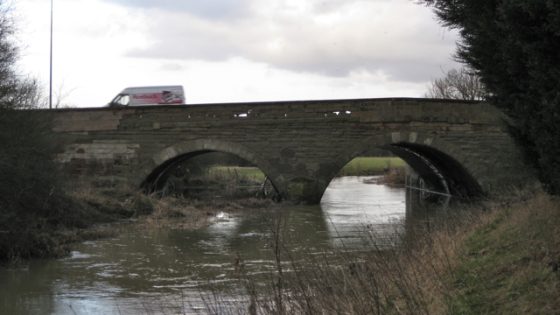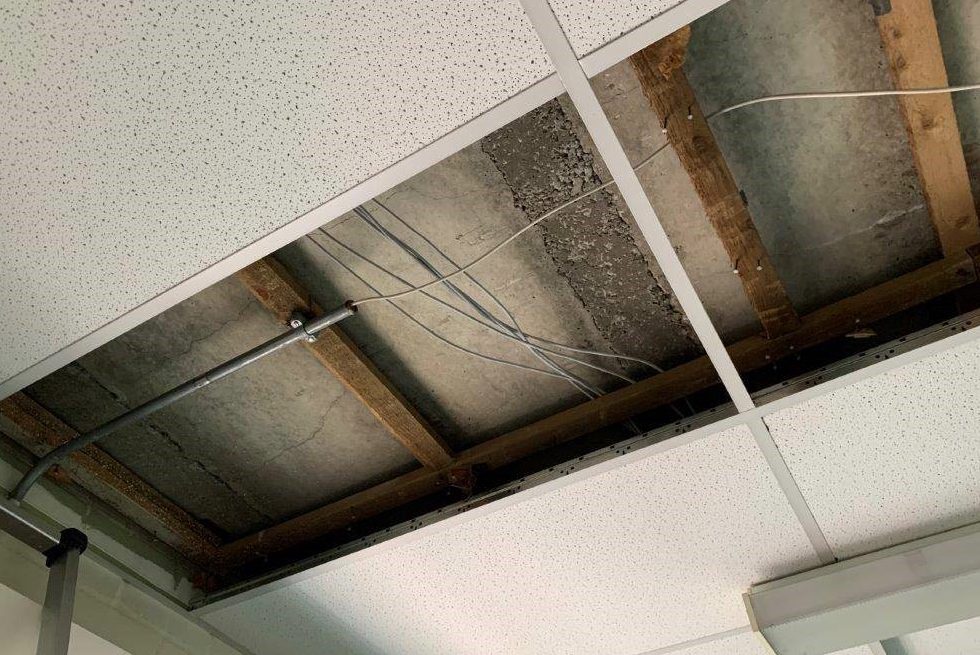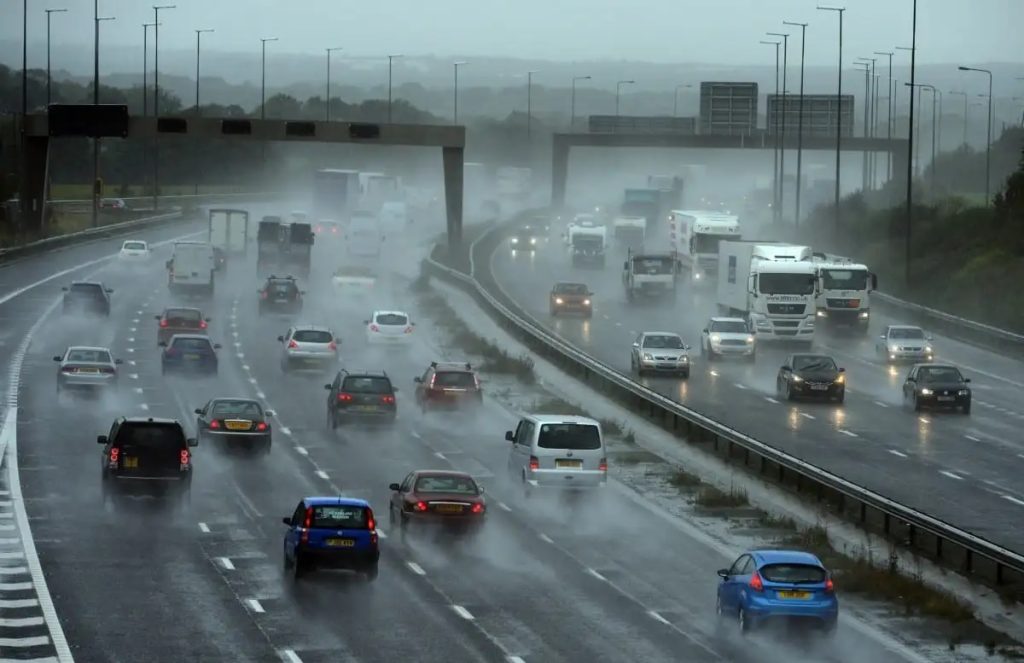Exclusive: 86 structures in operation on Strategic Road Network past 120-year design life

This post was originally published on this site

NCE can reveal that 86 structures currently in use by National Highways on the UK’s Strategic Road Network are past their intended design life of 120 years.
An exclusive Freedom of Information (FOI) request submitted by NCE has revealed the extent of structures that have passed modern design life standards.
The structures were compiled against a design life of 120 years which represents the design life for bridges and tunnels defined in modern standards that were introduced in the 1970s.
As of 16 November, when the FOI was submitted, 16 of these structures are over 200 years old, with eight being built in the 18th century.
As well as this, 17 of the structures on the list of 86 do not have official construction dates. Another four which are still on the road network and owned by National Highways have passed their design life but are currently not being used. All structures mentioned are either bridges or large culverts.
The oldest structure on the list is on the A64 in Scampston, North Yorkshire, and was originally constructed in 1772, meaning it reached its modern design life in 1892. In National Highways’ spreadsheet it is referred to as a trunk structure on the core network.
Spital Bridge, a core structure on the A19, was constructed only three years later in 1775, meaning its design life was reached in 1895.
The most recent structure to pass its design life is known as High Ulverston, which is located on the A590 in Cumbria. This was built in 1902 so passed its design life last year.
As well as the 86 structures that are already passed their design life, by 2035 another five will be added to that list.
The next structure to pass its design life is known as Gelt (New), which sits on the A69. This was built in 1904 meaning it will pass its design life next year. Another structure on the A69, known as Sheepfold Rly (Scarrow), will follow shortly after in 2025, having been built in 1905.
While many of the structures on the list were built before a number of design codes modern structures have to abide by, National Highways has ensured rolling maintenance programmes allow them to still be used safely.
National Highways employs an inspection regime for all its structures, which considers design, age, and the maintenance needs. General inspections are undertaken every two years with more detailed principal inspections typically every six years which involve close inspection of all parts of a structure.
Regular inspections and an ongoing programme of maintenance means the structures can last much longer than an original and notional design life, according to National Highways.
National Highways chief highways engineer Mike Wilson said: “We can reassure drivers that safety is and always will be our top priority.
“We have detailed design standards and quality control processes for our structures, including bridges on England’s motorways and major A roads.
“This includes regular inspections and an ongoing programme of maintenance which allows our bridges to remain in service.”
A FOI request was also submitted to Network Rail for a list of its structures that were past their design life.
Network Rail refused the request and responded: “Design life is a helpful approach in conservatively considering the use and conditions a structure will experience in fulfilling its intended purpose during its design development.
“Once constructed, the actual use and conditions an asset experiences and its actual performance in response to these can be understood directly. Design life becomes a very coarse indicator of future longevity and not one that would be recognised as good asset management practice in determining how to manage railway assets over their life cycle.
“The concept of design life is understood to have been introduced in limit state design codes during the second half of the 20th Century and matured through their evolution into the current Structural Eurocodes.
“The vast majority of railway structures were constructed prior to this. Where assets have been constructed or replaced to such codes the long design life applied (e.g. 120 years for bridges) means that these are not being approached.”
Full list of National Highways structures past their design life as of 16 November 2023:
| Structure | Location | Date constructed | Age (in years) |
| Scampston | A64 | 1772 | 251.87 |
| Spital Kilvington | A19 | 1775 | 248.87 |
| Crambeck | A64 | 1790 | 233.87 |
| Ryton (River) | A45 | 1796 | 227.87 |
| Wynchor No 1-Orig | A38 | 1797 | 226.87 |
| Monks Bridge | A38 | 1800 | 223.87 |
| Hesketh | A5 | 1800 | 223.87 |
| Towcester North | A5 | 1800 | 223.87 |
| Longhope | A40 | 1800 | 223.87 |
| Onibury Mill | A49 | 1801 | 222.87 |
| Wayford | A49 | 1811 | 212.87 |
| Tempsford Sth Flood Arch | A1 | 1815 | 208.87 |
| Tempsford Nth Flood Arch | A1 | 1815 | 208.87 |
| Salters Brook | A628 | 1816 | 207.87 |
| Tempsford | A1 | 1820 | 203.87 |
| Chideock Road | A35 | 1822 | 201.87 |
| Gelt (New) | A69 | 1824 | 199.87 |
| Cuttle Mill | A5 | 1827 | 196.87 |
| Grove | A49 | 1828 | 195.87 |
| Geese | A5 | 1830 | 193.87 |
| Claverton Farm Underpass | A36 | 1830 | 193.87 |
| Old Beck Washdike | A52 | 1831 | 192.87 |
| Blackwell (M/Arch) | A66 | 1832 | 191.87 |
| Crowlas Masonry Arch | A30 | 1833 | 190.87 |
| River Bewl | A21 | 1834 | 189.87 |
| Hinton Abbey | A36 | 1834 | 189.87 |
| Limpley Stoke Viaduct | A36 | 1834 | 189.87 |
| Monkton Combe (Railway) | A36 | 1834 | 189.87 |
| Monkton Combe (Canal) | A36 | 1834 | 189.87 |
| Cattle Creep | A69 | 1835 | 188.87 |
| Warwick | A69 | 1835 | 188.87 |
| Glyn | A38 | 1837 | 186.87 |
| Kirkby Thore | A66 | 1838 | 185.87 |
| Powmaughan | A69 | 1838 | 185.87 |
| Sheepfold Rly (Scarrow) | A69 | 1838 | 185.87 |
| Freeth – Original | A5 | 1850 | 173.87 |
| Millbrook (M/Arch) | A628 | 1850 | 173.87 |
| Freshwater | A628 | 1850 | 173.87 |
| Woodhead | A628 | 1850 | 173.87 |
| Springwater | A628 | 1850 | 173.87 |
| Dykelands Rly No 47 (M/Arch) | A590 | 1850 | 173.87 |
| Dunchurch Rly Sta Old-N | A45 | 1850 | 173.87 |
| Marbleflat | A69 | 1850 | 173.87 |
| Temon | A69 | 1850 | 173.87 |
| Skew Bridge | A36 | 1850 | 173.87 |
| Woofferton Skew | A49 | 1853 | 170.87 |
| Needless Rly 6 (dismantled) | A595 | 1857 | 166.87 |
| Trethawle | A38 | 1859 | 164.87 |
| Knuston Lodge South | A45 | 1860 | 163.87 |
| Woodlands Railway | A550 | 1861 | 162.87 |
| Llynclys Railway – Disused | A483 | 1861 | 162.87 |
| Redhill (Railway) | A49 | 1865 | 158.87 |
| Heathfield Railway M/Arch | A38 | 1866 | 157.87 |
| Tidbury Railway | A303 | 1867 | 156.87 |
| Crowden Brook | A628 | 1870 | 153.87 |
| Lipwood- Orig M/Arch | A69 | 1875 | 148.87 |
| Coastley – Orig M/Arch | A69 | 1875 | 148.87 |
| Griggs Hill | A30 | 1877 | 146.87 |
| Wansford Railway | A47 | 1880 | 143.87 |
| Palmers | A30 | 1881 | 142.87 |
| Cardinham Rly | A38 | 1887 | 136.87 |
| Carminow Railway | A38 | 1887 | 136.87 |
| Carminow Cross Slip Rd | A30 | 1887 | 136.87 |
| Onibury | A49 | 1887 | 136.87 |
| Nuns Walk East (Orig) | A34 | 1890 | 133.87 |
| South Witham Brick Arch | A1 | 1891 | 132.87 |
| Monkbretton | A259 | 1892 | 131.87 |
| Newlands | A590 | 1893 | 130.87 |
| Dorrington | A49 | 1896 | 127.87 |
| New Drain N/B – Orig | A38 | 1897 | 126.87 |
| Priests | A1 | 1899 | 124.87 |
| Priests | A1 | 1899 | 124.87 |
| High Ulverston | A590 | 1902 | 121.87 |
| Watford Locks | A5 | Unknown | Unknown |
| Wapping Barn | A5 | Unknown | Unknown |
| Sheepwash Corner | A628 | Unknown | Unknown |
| Roam (Orig M/Arch) | A590 | Unknown | Unknown |
| Dorchester Hill | A35 | Unknown | Unknown |
| West Of Elton | A52 | Unknown | Unknown |
| Twyford Old | A1 | Unknown | Unknown |
| Cranford Culvert No. 1 (Offline) | A14 | Unknown | Unknown |
| Cranford Culvert No. 2 (Offline) | A14 | Unknown | Unknown |
| Cranford Station Rail Bridge (Disused) | A14 | Unknown | Unknown |
| River Ise Flood Relief Twin Culvert | A14 | Unknown | Unknown |
| River Witham Br (Centre) | A1 | Unknown | Unknown |
| Ease Drain & Extension | A1 | Unknown | Unknown |
| Gailey Canal (Old) | A5 | Unknown | Unknown |
| The Tunnel | A483 | Unknown | Unknown |
| Beckgrange | A69 | Unknown | Unknown |
| Wilmington | A35 | Unknown | Unknown |
Like what you’ve read? To receive New Civil Engineer’s daily and weekly newsletters click here.





Responses